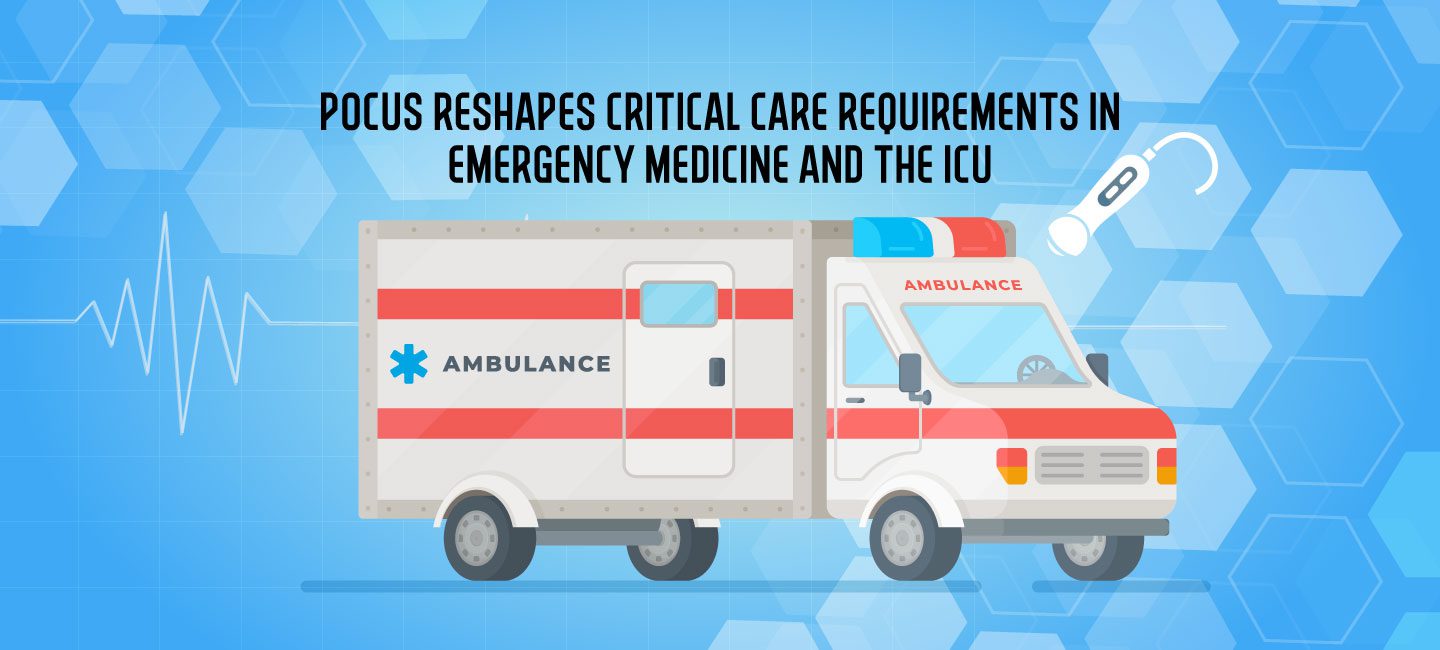Seeing and assessing physiological function in real-time has been an integral landmark in critical care medicine and has revolutionized patient care in the intensive care unit (ICU). Point-of-care ultrasound (POCUS) has created a paradigm shift in acute care from a traditional consultative approach to physicians of all disciplines being intimately involved and responsible for image acquisition and interpretation. POCUS complements the clinical assessment and attests to the presumptive diagnosis derived from a patient’s medical history and physical examination. Although the primary purpose of POCUS differs between intensive care and emergency physicians, it is a valuable tool for both specialties.

POCUS is well known for providing clinicians with punctual and incredible insights into a patient’s condition, eliminating the extensive decision-making process when caring for patients. The modality allows for timely diagnosis without further putting a patient in potential danger due to transport. Bedside multi-organ POCUS is used as an adjunct. It provides detailed information to guide clinical decision-making, particularly for critically ill patients, such as those requiring an ultrasound-guided procedure, presenting thoracoabdominal trauma, experiencing chest pain or respiratory difficulty, or suffering from DVT.
Ultimately, POCUS is becoming the standard of care in the ICU. Here are a few cases demonstrating why.
Ultrasound-guided Procedure
Ultrasound-guided procedures are accurate, safe, and especially useful for critically ill patients in the emergency department (ED) and the ICU. POCUS allows physicians to perform with ease various procedures that must be conducted at the bedside. These include but are not limited to:
- Central and peripheral venous catheterization
- Arterial catheterization
- Thoracentesis
- Paracentesis
- Pericardiocentesis
- Arthrocentesis
- Nerve block
- Site marking for surgical airway
- Abscess drainage
- Foreign body removal
Thoracic Ultrasonography
Patients with dyspnea and pleuritic chest pain are candidates for a thoracic ultrasound. POCUS is recommended to be the imaging modality of choice for patients experiencing respiratory failure in the ED or ICU. This preference stems from the pocket-sized device’s speed, safety, and accuracy. Compared with a chest X-ray, POCUS demonstrates a similar performance with greater benefit for both the physician and patient.
Additionally, thoracic ultrasound’s precision, sensitivity, and specificity are comparable to chest CT in patients with respiratory failure.
Critical Care Echocardiography
Categorizing shock state with goal-directed echocardiography is beneficial for patients with cardiorespiratory failure. The attending physician can rapidly determine whether the shock state is distributive, obstructive, cardiogenic, or hypovolaemic using limited echocardiographic views. With goal-directed echocardiography, key findings and depth of the condition are immediately identifiable, allowing the coordination of emergent procedures.
Using POCUS to image the heart also permits rapid assessment of the causes. The provider can quickly determine what is inducing the respiratory failure that derives from cardiac dysfunction.
Abdominal Goal-directed Exams
Once a healthcare professional has mastered the complexity of the abdominal space and conquered abdominal ultrasonography, goal-directed abdominal ultrasound is reasonably straightforward and has numerous applications in the ICU. These include:
- The detection of ascites
- The assessment for hydronephrosis
- The distension of the bladder
- The evaluation of the aorta
- The examination of gross organ abnormalities
- The evaluation of peritoneal free fluid
Evaluation for DVT with Pulmonary Embolism
An assessment for deep vein thrombosis (DVT) is required to determine the cause of a pulmonary embolism. POCUS is ideal for detecting blockages or blood clots in the deep veins. Duplex ultrasonography is the standard form of examination used to image and view blood flow in the veins. The two-dimensional compression method can be used to assess and evaluate DVT rapidly.
In most cases, POCUS is performed first to avoid more invasive procedures for diagnosis, such as venography.
POCUS Brings Value to Critical Care
The rapid growth and expansion of POCUS usage have created a shift, making it the modality of choice when evaluating critically ill patients. It is seen as an extremely valuable tool, signaled by an era of time-saving and cost-efficiency. POCUS is visual medicine allowing providers to see the anatomy like they never have before, enhancing the care they give and improving the care patients receive. Within the walls of medicine, healthcare professionals can’t find a critical care journal not embedded with articles supporting critical care ultrasound.
POCUS is critical care’s future. To stay abreast of the development and impact of POCUS, visit the Point-of-Care Ultrasound Certification Academy’s™ education and training resources.





















